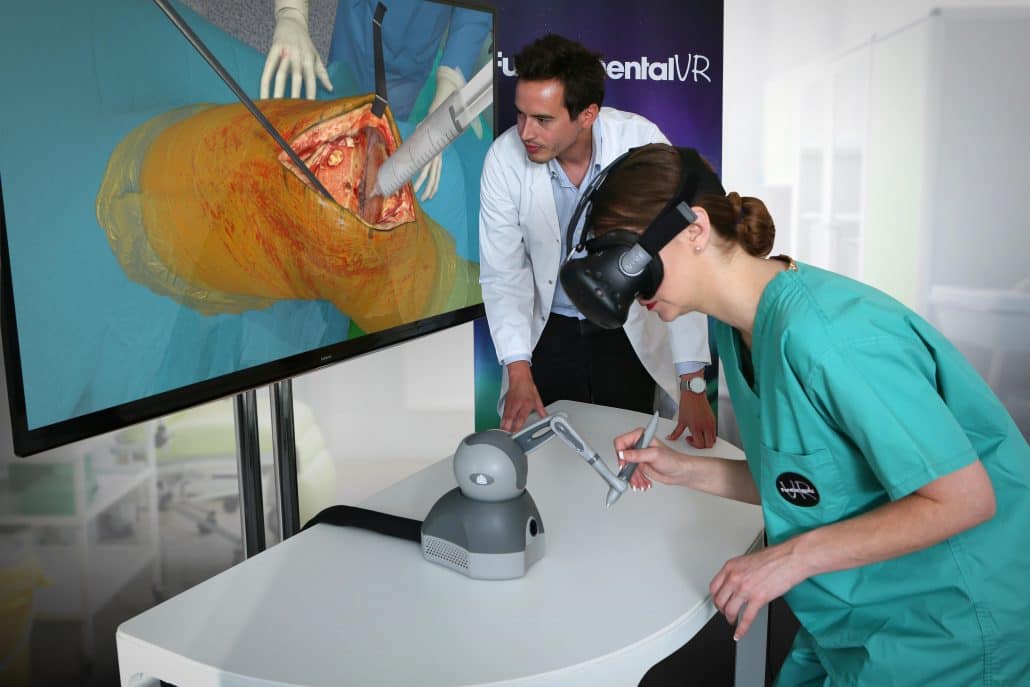FundamentalVR Adds Eye-Tracking to its Surgical Simulation Platform
FundamentalVR wants to make its virtual reality surgical simulation platform even more robust, efficient and convincing. In late July, the company announced that it had implemented eye-tracking into its surgery sim. This may seem like a small step at improving its platform but it is a highly significant one.
In the virtual reality context, eye-tracking has mainly to do with foveated rendering. Eye-tracking can be used as a virtual reality input although its implementation is often an afterthought given the wide range of other input options that are available to developers. However, for FundamentalVR, the implementation of eye-tracking into the platform is a critical step.

Fundamental has always wanted an eye-tracking functionality to minimize the head movement while the user is operating in the real world. The technology will track the eye movement and the user’s surgical sight gaze. The ability to track the user’s eyes with precision as opposed to the head movement is a major improvement as far as usability is concerned.
When someone is operating inside FundamentalVR, there is a virtual window that will guide them. The user is usually required to look up from the ongoing surgery when interacting this with this virtual window. Now, with the eye-tracking implementation, a user wearing an HTC Vive Pro Eye can promptly glance at desired options by looking out of the corner of their eyes and then refocusing their eyes on the surgical table. This is an improvement over looking up but it is still not as seamless as the human interactions in the real-life situations but it is a critical step forward towards making this process more flawless.
The implementation also improves Fundamental’s capabilities in the assessments and analytics department. Educators will now be able to more clearly spot areas where users are directing their focus and work out how to improve this moving forward based on very accurate empirical analytics.
The FundamentalVR platform, as a whole, delivers an impressive and robust user experience, even without the latest tweak. For surgeons, the platform is quite convincing. It has enhanced realism. You can even swap the 3D-printed controllers for specific tasks to improve the immersion/realism.
The Fundamental team is not done yet with the platform. They are still planning on building a versatile platform that will work with various kinds of haptic tech. Fundamental has already integrated support for the HaptX gloves onto the platform even though the haptic devices are still very few and not refined enough to deliver a flawless haptic experience.
Fundamental wants to provide haptic integration on its platform with the five or six “interesting” companies that are currently developing haptic solutions. The company says it wants these companies to get robust availability on a global scale and at an affordable pricing even though those key players are still far from realizing such a goal. Most haptic products are still impractical prototypes in the labs or bulky, cumbersome and costly contraptions that are unlikely to see much traction in the market.
With the haptic integration, however, Fundamental appears to be sending the right signals. VR surgery is one of the most useful and practical applications of virtual reality. Check out our post on some of the top VR surgical solutions that have already hit the market.
https://virtualrealitytimes.com/2019/08/18/fundamentalvr-adds-eye-tracking-to-its-surgical-simulation-platform/https://virtualrealitytimes.com/wp-content/uploads/2019/04/FundamentalVR-600x400.jpghttps://virtualrealitytimes.com/wp-content/uploads/2019/04/FundamentalVR-150x90.jpgBusinessHealthStartupsTechnologyFundamentalVR wants to make its virtual reality surgical simulation platform even more robust, efficient and convincing. In late July, the company announced that it had implemented eye-tracking into its surgery sim. This may seem like a small step at improving its platform but it is a highly significant one. In...Sam OchanjiSam Ochanji[email protected]EditorVirtual Reality Times - Metaverse & VR
